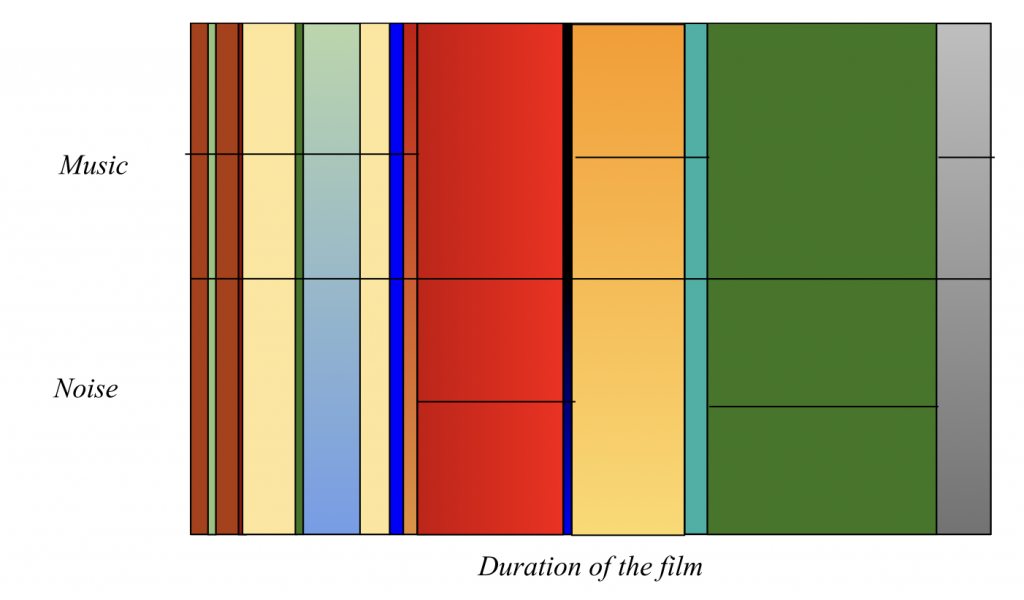
Above is a diagram displaying which sections of the film use music and noise, the longer sections have the most intense colours and are the sections with noise. The reason these scenes have been paired with noise rather than music is they are the most intense parts of the film, to pair that with noise made sense to me as noise is capable of reflecting this intensity.
The sections with music tended to be the parts that were cut faster, that had more variety in colour, as well as the section where the character approaches the cathedral. The music is quite tense throughout yet still feels like relief as it is set next to noise sections, having the noise sections allowed me to have tension throughout the whole thing yet still have dynamics with the tension.
Alternating between music and noise was a technique I used to keep tension throughout, all of the music could be tense and dissonant as in comparison to the noise this is less tense, this created a more dynamic sonic palette. One example of this is after the noise section of the soundtrack I added some improvised guitar, I set up a condenser mic hanging around two feet away to get a very roomy, spacey recording and played for a few minutes, cutting out a section that I thought worked for the sound. The section I chose to use for the film was a melody that I thought started off tense and dissonant but then evolved into something more melodic. The combination of a tension and harmony represented an inner turmoil for the character
Oftentimes the musical improvisation paired with silent film is performed as the film is played, I took a different approach by recording the improvisation separately. I did this because I didn’t want to underscore the film, to have the film to decide the mood of the soundtrack, I wanted the soundtrack to decide the mood of the film, when the music displays a different emotion to what is on screen this provokes the audience member to think about why it is showing something different.